Premium Only Content
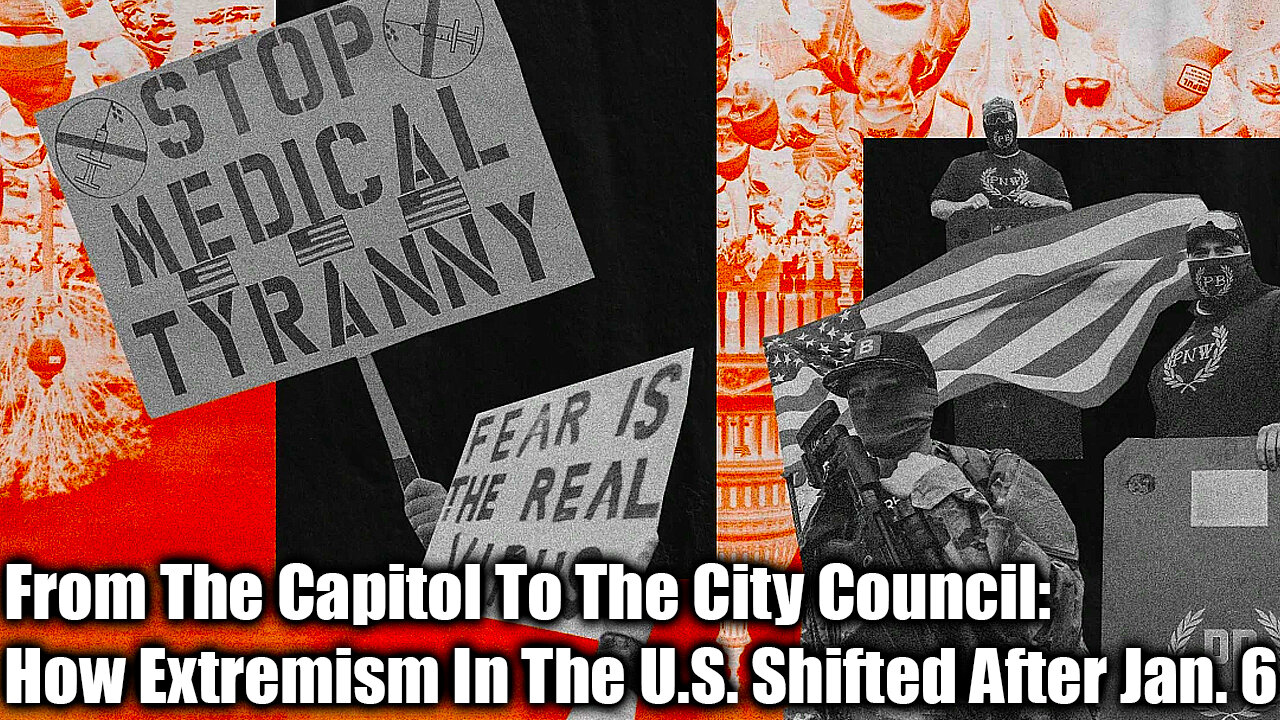
How Extremism In The U.S. Shifted After The Jan. 6 Capitol Riot - Nexa News
How Extremism In The U.S. Shifted After The Jan. 6 Capitol Riot
Denise Aguilar Was In Washington On Jan. 6, Appearing As A Featured Speaker At The “Health Freedom” Stage — One Of The Many Events Held Hours Before A Wide Range Of Far-Right Groups And Trump Supporters Would Storm The Capitol.
Shortly After The Riot, Aguilar Claimed In A Since-Deleted Instagram Video That “We Stormed The Capitol, And Patriots Broke Open The Doors” And “We’re Taking Back Our States.” She Called The Day A “Revolution.”
Nearly A Year Later, Aguilar Appeared At A More Low-Key Event With A Different Tone: A School Board Meeting In San Joaquin County, Just South Of Sacramento.
That Evening, The Board Would Be Considering Covid Vaccine Guidance For The District’s Students, And She Was There To Raise Her Voice Against Any Government Mandates.
The Shift From National To Local Is One With A Purpose.
Supporters Of Jan. 6 Attack On Capitol Shift Focus To Local Politics
“We Figured Out That Going To The Capitol And Working That Particular Piece Doesn’t Do Anything, Because These Legislators Have Already Made Up Their Mind,” Aguilar Told NBC News In December Outside The Stockton Meeting.
“It’s All About Local Legislation, Your Local School Districts, Your City Council Board Of Supervisors,” She Said.
“These People Live In Our Community.
They Work Here, And They’re Going To Have To Face Us Every Single Day.”
Aguilar’s Changing Focus Is Indicative Of A Broader Transformation By Many Of The Extremist Groups That Participated In The Jan. 6 Capitol Riot.
After A Brief Cooling-Off Period, Groups Like Aguilar’s All-Women Militia Group, Mamalitia, And Many Others Have Focused On Local Politics — Most Notably School Boards And County Health Boards — Where They Have Found Success In Pushing Back Against Everything From Covid Mitigation Proposals To Public School Curricula.
Domestic Extremist Groups Ranging From The Qanon Conspiracy Movement And The Proud Boys To Militia Organizations And Avowed White Nationalists Have Re-Emerged In Recent Months, Frequently Trying To Effect Change At The Local Level.
But It’s Not Just The Strategy That Has Shifted.
Most Far-Right Domestic Extremist Movements Have Also Adapted Their Infrastructure And Messaging, According To A Forthcoming Report By The Digital Forensic Research Lab At The Atlantic Council, A Nonprofit International Affairs Think Tank.
Freshman Members Of Congress Reflect On Jan. 6 Riot
That Analysis, Which Tracked Violent Domestic Extremism And Political Violence Since Jan. 6 Via News Reports And Known Extremist Networks, Found That Despite An Initial Decline, Domestic Extremist Groups Have Evolved And Resurfaced, Encouraging Local Action While Recruiting And Spreading Their Messages Through Culture-War Debates Including Vaccines, Race And Education.
“The Domestic Extremist Landscape Was Battered By Jan. 6,” Said Jared Holt, A Resident Fellow At The Digital Forensic Research Lab And Author Of The New Report.
“But Extremism Is Dynamic And Fluid.
It Is Always Trying To Adapt To Fit The Container That It’s In.”
For More On This Story, Watch NBC’s “Nightly News With Lester Holt” Tonight At 6:30 P.M. ET/5:30 P.M. CT.
At The Event In Stockton, Aguilar Spoke Through A Bullhorn Outside, And Later At The Microphone Inside, Asking The Board To “Challenge The State’s Mandates.” Aguilar Was Immediately Followed At The Microphone By Two More Parents, Who Claimed Radiofrequency Radiation From Computers Used For Distance Learning Poisoned Their Children And Possibly Gave Them A Case Of “Havana Syndrome,” A Mysterious Brain Ailment Reported By Many Diplomats And U.S. Intelligence Officers.
Minutes After That, The Board Of Education Agreed To Push Back Against California’s Still-Pending Vaccination Mandate.
The Protesters Gave The School Board A Standing Ovation.
Going Local
After Their Failed Attempt To Overturn A Presidential Election Perceived As Stolen, Domestic Extremists Retreated To Their Backyards.
Extremist Movements Faced “A Massive PR Crisis,” Holt Said.
“A Lot Of These Movements Spent 2020 Raising Their Visibility, Building Out Their Ranks, Going To Mainstream Conservative Rallies At State Capitols, Showing Up In Opposition To Racial Justice Protests Over The Summer And Getting Very Active During The Election In The Period Afterward.
All Of That Perceived Momentum Got Sucked Out Of The Room Very Quickly.”
Then The Arrests Started.
More Than 700 People Have Been Charged With Crimes Allegedly Committed At The Capitol On Jan. 6.
Many Of Those Arrested Have Since Been Linked By Prosecutors, Researchers And Journalists To Extremist Groups: The Proud Boys, Qanon, Militia Groups Such As The Oath Keepers And The Three Percenters, And White Supremacists.
But By Spring, There Were Already Internal Calls For The Far Right To Refocus.
Steve Bannon, A Former Trump Adviser And Promoter Of The Jan. 6 Stop The Steal Rallies, Called For Foot Soldiers In His Far-Right Nationalism Movement To Get Involved In Local Politics.
“We’re Going To Take This Back Village By Village,” He Told His Podcast Listeners In May.
A Propublica Investigation Found An Unusual Increase In Local-Level Party Officers Following Bannon’s Rallying.
A Move Toward Local Action Allowed Extremist Groups “To Evade The Scrutiny, Surveillance And Attention That They Might Receive When They Operate On A National Level,” Holt Said.
While Far-Right Extremists May Be Less Willing To Telegraph Their Activities Than They Were In Recent Years, News Reports Documented Some Of Their Efforts, Particularly The Harassment Of Local Officials And Disruption Of Local Governments.
Public Schools In Vancouver, Oregon, Went Into Lockdown In September, After The Far-Right Group Patriot Prayer, Known In The Pacific Northwest For Targeting Political Opponents At Violent Pro-Trump Portland Rallies, Spread A Rumor That A Child Faced Arrest For Failing To Wear A Mask.
The False Claim Was Amplified By Proud Boys Members, Which Resulted In An Impromptu Anti-Mask Protest Outside A High School.
In October, More Than A Dozen Reportedly “Agitated And Angry” Members Of A Colorado Militia, The United American Defense Force, Filed Into A School Board Meeting To Oppose Mask Mandates.
Shifting Messages
It’s Not Just The Audience, But The Message That’s Changed.
“A Lot Of These Incidents Are Still Happening Near Major Metropolitan Areas, High Population Areas, But The Targets Of These Protests Are Not National Causes Anymore,” Holt Said.
As Part Of The Effort To Stay Relevant And Engaged In Local Fights, Extremists Have Put New Focus On Covid-19 Vaccines And Safety Protocols, Race In School Curricula And Other Culture War Battles.
Over The Summer, Qanon Believers Changed Their Mythology Of Donald Trump As Savior To Include Themselves As Part Of A Plan To Save The World.
On Popular Qanon Forums, Influencers Urged Followers To Get Involved With School Committees And Boards And Run For Election At Any Level.
In November, Super Happy Fun America (SHFA), A Far-Right Trolling Organization, Announced An Anti-Vaccine Rally In Boston.
Two SHFA Leaders, Mark Sahady And Suzanne Ianni, Are Currently Facing Charges In The Jan. 6 Attack.
That Same Month, Around 30 Men Dressed In The Black And Yellow Uniforms Of The Proud Boys, A Far-Right Gang Known For Political Violence And An Allegiance To So-Called Western Values, Marched The Streets Of Rockville Centre, A Long Island Suburb Of New York.
In Their Telegram Channel, The Long Island Proud Boys Posted A Hodgepodge Of Purposes Behind The March, Which Included Honoring The Victims Of A Mass Killing Of Holiday Revelers The Weekend Before In Waukesha, Wisconsin, And Fighting Against “Illegal Vaccine Mandates.” (As Of Now, There Is No Evidence That The Six Deaths In Waukesha, Which Happened When A Black Man Drove His Car Into The Crowd At A Christmas Parade, Were Racially Motivated.)
In Addition To Acting As Muscle For Anti-Vaccine Rallies In New York And Los Angeles, The Proud Boys Have Been An Intimidating Presence At Schools.
In November, 10 Members Of The Group Attended A School Board Meeting In Suburban Illinois To Protest An LGBTQ-Friendly Book In Its Library.
They “Jeered” At Students Who Came To Support The Book, And Called Them “Pedophiles,” According To The Chicago Sun-Times.
Members Of The Cape Fear Proud Boys Chapter Who Showed Up In Uniform And Full Face Masks At Health And School Board Meetings In New Hanover, North Carolina, In November Made Their Purpose Clear.
“If Our Presence Escalates That Pressure,” One Member Told A Local Reporter, “And Makes It To The Point Where We Become A Distraction To Conducting Business And They Just Change The Mask Mandate So We Go Away, That’s A Win.”
The Proud Boys Used The Media Coverage In Recruitment Propaganda, Featuring A Photo Of The Group At The Meeting In Flyers That Read, “We Saved You A Seat.”
Out Of Sight And Online
Efforts To Organize Follow-Up Events To Jan. 6 Were Quickly Panned Once The Crowdsourced Identification And Arrests Began.
And So Instead Of Rallying At The U.S. Capitol Or Their Statehouses, The Far Right Turned Back To The Internet.
“It Doesn’t Take An Event Every Weekend To Sustain One Of These Communities,” Said Megan Squire, A Senior Fellow For Data Analytics At The Southern Poverty Law Center Who Tracks Online Extremism.
“You Can Sustain A Community Online.”
After Jan. 6, Various Internet Platforms And Digital Infrastructure Companies, Some Of Which Had Already Banned Various Groups Involved In The Riot, Took Action.
Website Hosts Ended Service Agreements, Online Storefronts Removed Militia And Qanon Content, Groups Including The Oath Keepers Were Dropped By Their Payment Processors, And Mainstream Streaming Platforms Banned Popular Creators Who Participated In Or Promoted Violence At The Capitol.
Remembering The Jan. 6 Riot: What It Was Like Inside The Capitol
Extremists Reacted By Moving To Unmoderated Alternative Platforms, Many Of Which Offer A Way For Extremists To Broadcast Their Messages And Make Money Doing So.
“Everybody And Their Brother Has A Podcast Now And A Videocast, And They’re Doing Nightly Streams,” Squire Said.
“There Are A Billion Platforms Now That Offer Streaming, And Most Of That Is Monetized.”
The Shift Away From Mainstream Platforms Has Also Given Some Extremists Groups Reason To Band Together.
Thedonald Forum, Which Spun Off From Reddit To Become An Independent Website That Hosted Some Of The Most Violent Pro-Trump Content, Including Specific Plans To Breach The Capitol, Has Only Grown In The Last Year, Rebranding As A New Site, Patriots.Win, And Expanding To Host New Far-Right Communities As They Are Banned From Reddit, According To The Digital Forensic Research Lab Report.
Some People, Including Mike Lindell, The Pillow Company Owner And Funder Of Stop The Steal Rallies And Causes, Created Their Own Online Spaces.
Nick Fuentes, An Influential 22-Year-Old White Nationalist Who Urged A Crowd Of His Supporters Gathered At Freedom Plaza On Jan. 6, To “Take This Country Back By Force,” Created His Own Streaming Service After He Was Booted From Dlive, Which He Had Been Using Before The Capitol Riot.
“We’re Back,” Fuentes Said In A Livestream From His New Platform In October.
“We Can’t Be Censored.
We Can’t Be De-Platformed.
We’re All Here.”
‘The Toxins Are Still There’
The U.S. Government Is Taking The Threat Of Domestic Extremism More Seriously.
More Than 700 People So Far Have Been Arrested And Charged With Crimes Related To The Capitol Breach.
A Select House Committee Is Investigating The Attack, And President Joe Biden Has Established A National Strategy That Devotes $100 Million To The Justice Department To Address The Threat Of Domestic Violent Extremism.
The Vigilance Is Warranted, Said Brian Levin, Director Of The Center For The Study Of Hate And Extremism At California State University, San Bernardino.
Because Even While Extremist Groups Go Through A Time Of “Fragmentation And Realignment,” He Said The Environmental Elements That Contributed To The Rise In Extremism Up To The Attack On The Capitol Remain Strong.
Indeed, White Nationalist Groups Are Beginning To Re-Emerge, Planning Large-Scale Events That Had Mostly Ceased Since The Deadly Unite The Right Rally In Charlottesville, Virginia, In 2017.
“Our Demonstrations Are An Exhibition Of Our Unified Capability To Organize, To Show Our Strength,” Thomas Ryan Rousseau, Founder Of The White Nationalist Group Patriot Front, Explained In A Propaganda Video Made From His Group’s December March On The National Mall, During Which 100 Khaki-Dressed Men, Flanked By Police, Chanted “Reclaim America,” And Marched To The Capitol, Then Piled Into The Back Of A Moving Truck And Left.
The Car Attack That Killed Six People And Injured More Than 60 At The Parade In Waukesha, Wisconsin, Was Animating For White Nationalist Groups And Movements, Which Are Looking For Race-Based Incidents To Further Incite Violence And Division.
Levin Is Concerned About The Rise In Anti-Social Markers — Political Polarization, Internet Use, Alcoholism And Psychological Distress, Among Others — That Indicate Prime Conditions For Extremist Ideas And Groups To Take Hold.
“These Extreme Communities May Very Well Ebb And Flow And Even Hit Their Ceiling, But They’re Not Going To Disintegrate,” Levin Said.
“It’s Like Hitting Mercury With A Hammer.
Distribution And Size Will Vary.
But The Toxins Are Still There.”
-
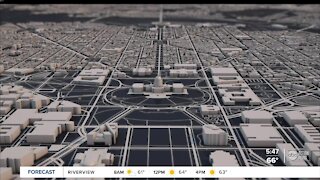 2:19
2:19
WFTS
2 years agoCriminal cases a year after capitol riot
672 -
 1:35
1:35
KSHB
3 years agoGun sales rise after Capitol riot
2001 -
 1:52
1:52
WTMJMilwaukee
3 years ago52 arrested after riot at U.S Capitol
5.33K14 -
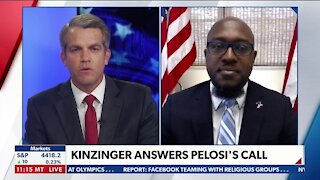 4:47
4:47
NEWSMAX
3 years agoDrew-Montez Clark: Family Targeted After Capitol Breach
1.55K17 -
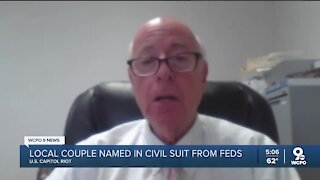 2:04
2:04
WCPO
3 years agoMorrow couple named in Capitol Riot lawsuit
6 -
 17:06
17:06
Sleep is CANCELED
19 hours ago10 SCARY Videos To Keep You Up All Night!
24.8K2 -
 2:37
2:37
Canadian Crooner
1 year agoPat Coolen | Let It Snow!
15.6K8 -
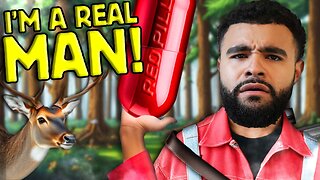 2:44
2:44
BIG NEM
10 hours agoWhat's Really Behind the Fake Alpha Male Epidemic?
12.7K4 -
 57:20
57:20
State of the Second Podcast
7 days agoThe Inventor of Bump Stock Fights Back! (ft. Slide Fire)
8.6K4 -
 1:04:12
1:04:12
PMG
1 day ago $8.13 earned"I’ll be DRONED for Christmas!"
31K11